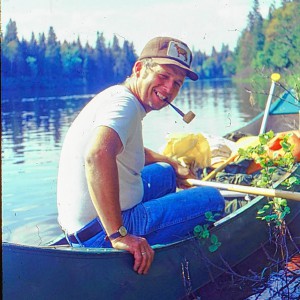Column: A pipeline that can mitigate global warming?
| Published: 01-26-2024 5:39 PM |
Can a pipeline be good for the environment? For many years, the answer to this was an easy “no,” and many environmental groups count blocking the Keystone XL pipeline among their most significant achievements.
However, the pressing need to remove human-generated carbon dioxide (CO2) from the atmosphere has led to the development of new pipeline projects, this time to transport CO2 for long-term storage in underground rock formations, and these pipelines may be critical to help prevent climate change.
Stabilizing the climate requires that we eventually reduce net human-generated CO2 to zero. Reducing emissions is a key part of this process. But as we pick the low hanging fruit with respect to emission reduction, it gets progressively more difficult and expensive to make further reductions. For this reason, almost all climate change mitigation scenarios include CO2 removal from the atmosphere, often called “negative emissions.” According to the Rocky Mountain Institute, “while we must do all we can to minimize the need for CO2 removal by accelerating emissions reductions, the world will need billions of tons of CO2 removal annually by 2050.”
Financial incentives are a proven strategy for reducing pollution. One well-known example is the “cap-and-trade” program. In the 1970s, it was found that sulfur dioxide pollution was causing acid rain. The Clean Air Act Amendments of 1990 set up a “cap-and-trade” program to reduce sulfur dioxide emissions. The program’s long-term goal was achieved by 2007, three-years ahead of schedule, and at a fourth of the initially predicted cost. The success of this program has inspired the use of financial incentives to reduce other forms of pollution, such as CO2. In 2008, the IRS introduced tax credits. Initially, they did not spur much CO2 reduction activity, so they were subsequently increased in 2018, and again in 2022. Now they are having their desired effect, and several commercial CO2 removal projects have been started.
One way to store CO2 is to pump it underground. Below 1,000 feet or so, CO2 becomes a liquid, and can be stored in porous rock formations. This technique was originally developed by the petroleum industry in the 1970s to enhance oil recovery, though eventually it became clear that the same technology could be used for long-term CO2 storage.
The oldest such effort is the Sleipner Project in Norway, which has sequestered about a million tons of CO2 annually since 1996. A pilot project, funded by the US Department of Energy, demonstrated CO2 sequestration in Decatur, Ill., from 2011 to 2014, and its success led to the Illinois Industrial Carbon Capture and Storage (IL-ICCS) project, which is currently operating. A 2019 report by the National Academies of Sciences, Engineering, and Medicine, geological CO2 describes sequestration as “the most mature of the options available today for reliable storage,” and “is expected to contribute about 14% of the emissions reductions needed to stabilize the climate at 2 degrees (Celsius) warming.”
Biofuels have an important role to play in climate stabilization because of their ability to allow negative CO2 emissions. Green plants can capture CO2 from the atmosphere and convert it into sugars, starches and cellulose. These can then be fermented into biofuels such as ethanol.
During the fermentation process, a portion of the CO2 originally captured from the atmosphere can be stored underground. The IL-ICCS project was chosen as a demonstration site because of the close proximity of a corn ethanol facility that generates CO2 and underground geology that is compatible with CO2 storage, eliminating the need for a CO2 pipeline. However, the number of such sites is relatively small. Our ability to build on the success of this promising technology would be greatly expanded by the construction of CO2 pipelines.
Article continues after...
Yesterday's Most Read Articles
 Herd departs Hartford’s last remaining dairy farm
Herd departs Hartford’s last remaining dairy farm
 Bald eagles are back, but great blue herons paid the price
Bald eagles are back, but great blue herons paid the price
 At Dartmouth, hundreds protest ongoing war in Gaza and express support for academic freedom
At Dartmouth, hundreds protest ongoing war in Gaza and express support for academic freedom
 Kenyon: What makes Dartmouth different?
Kenyon: What makes Dartmouth different?
 A Life: Richard Fabrizio ‘was not getting rich but was doing something that made him happy’
A Life: Richard Fabrizio ‘was not getting rich but was doing something that made him happy’
Recently, three CO2 pipelines have been proposed in the U.S.: Summit Carbon Solutions, Navigator CO2 Ventures and Wolf Carbon Solutions. Of those three, two have been canceled because of local opposition, including from the Sierra Club and other environmental advocacy groups. As with any new technology, there are a variety of potential concerns, including pipeline safety, compensation to the local community and landowners and the moral hazard of CO2 storage reducing efforts aimed at emission reduction.
Although these potential problems should not be minimized, all negative emission technologies entail challenges and potential concerns. Capturing CO2 from point sources and putting it in the ground is widely thought to be one of the arrows in our quiver of climate change solutions, and CO2 from biofuel fermentations is an easy win, because the hard work of capturing CO2 from the atmosphere has already been done by photosynthesis. There are arguments for emptying the quiver since every arrow involves costs and risks. That’s a sure way to fail.
The fight against global climate change needs to be an integrated effort involving many technologies, sectors and people. It will also require being open to change, including in our notions of what is good and bad for the environment. Pipelines for oil and gas and for CO2 generated from burning fossil fuels have been criticized by environmentalists on the grounds that they perpetuate the status quo rather than support a fossil fuel-free future.
Pipelines to enable storage of CO2 removed from the atmosphere by photosynthesis in the course of biofuel production, by contrast, are a key strategy for achieving the CO2 removal critically needed for climate stabilization. Working to cancel pipeline projects for removing photosynthesis-derived CO2 runs the risk of winning a battle while losing the war.
Daniel Olson is a professor at Dartmouth College developing technologies for cellulosic biofuel production. He will discuss his work at 3:30 p.m. on Friday at the Jones Seminar on Science, Technology, and Society at Dartmouth’s Thayer School of Engineering, in Hanover, and at a more informal gathering at 7 p.m. on Feb. 6 at the Norwich Inn as part of the Suds & Science program sponsored by the Vermont Center for Ecostudies.

 Editorial: Parker parole a reminder of how violence reshapes our lives
Editorial: Parker parole a reminder of how violence reshapes our lives Editorial: Chris Sununu’s moral vacuum
Editorial: Chris Sununu’s moral vacuum Editorial: Gambling tarnishes America’s sporting life
Editorial: Gambling tarnishes America’s sporting life By the Way: A white nationalist’s many mistruths
By the Way: A white nationalist’s many mistruths
